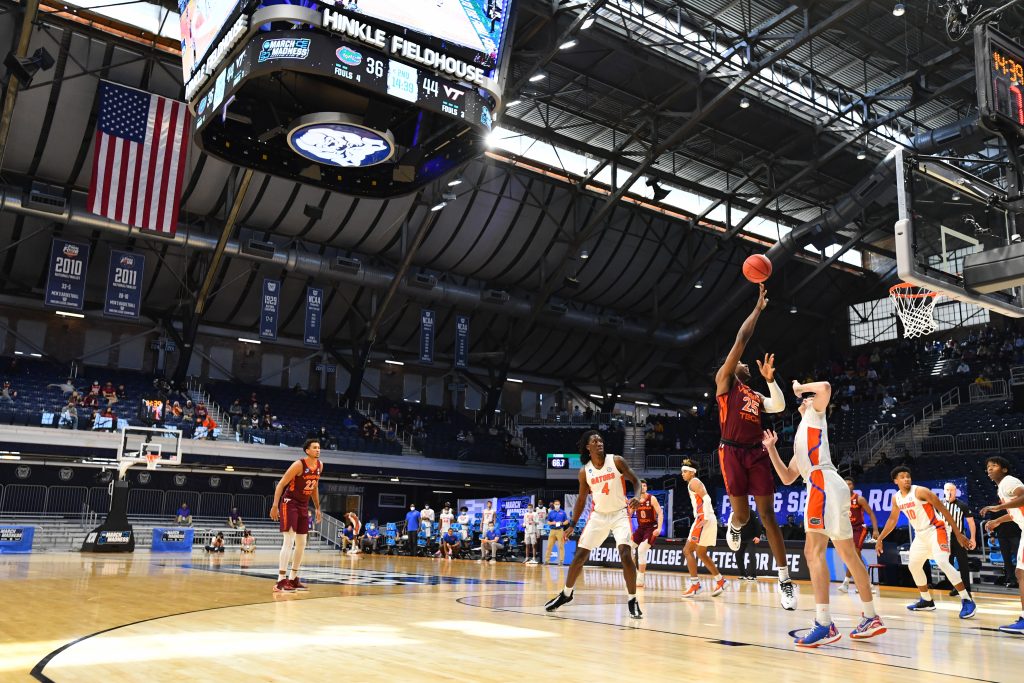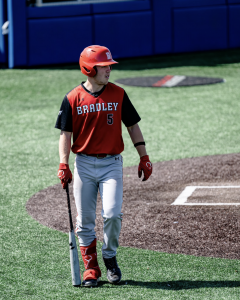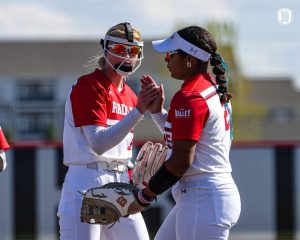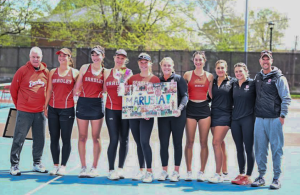
March Madness is in full swing once again, but this time with a twist. It’s not the Cinderella runs of Oral Roberts or Oregon State, the quick exits for Big Ten teams or every bracket busted in the first round.
That’s not to say this tournament is without all the madness. This year’s Sweet Sixteen has the highest average seed remaining in history at 5.88.
Rather, it’s the fact that this entire tournament is (mostly) played in a single city, with separate venues around the city hosting two or three games a day throughout the first round. Indianapolis was scheduled to host the Final Four this year before the NCAA made its changes, but why choose Indianapolis to host the entire tournament?
Quite simply, the NCAA headquarters are located in Indianapolis, just a short walk from the JW Marriott that boasts the largest bracket in the world on the side of the building. This would allow the NCAA to keep a close eye on the entire tournament, while also keeping travel costs down.
In addition, Indianapolis is built to host events of this magnitude. It has the size and infrastructure downtown, and the basketball aspect is an added perk.
The Indiana Convention Center boasts over 550,000 square feet of flooring, with removable walls in most rooms, allowing organizers to set up practice courts however they would like. It’s no McCormick Place in Chicago, but it gets the job done.
The Indiana Convention Center also allows safe travel for teams without having to leave the building. Fourteen hotels are attached via skywalk, including six Marriott hotels that are partners with the NCAA.
To top things off, the Indiana Convention Center is attached to Lucas Oil Stadium, one of the few playing sites, by an underground tunnel in the southeast corner of the building. If they preferred, no team would ever have to go outside and risk accidental exposure.
So, the players and the facilities have been taken care of. They have places to stay and places to train. But what about leisure time?
Victory Field, the home of the Indianapolis Indians, a Triple-A baseball team, has opened its field to teams. With over 120,000 square footage of playing surface, teams can spread out and enjoy the spring weather rather than being cooped up in a hotel room. This allows them to take their mind off basketball and decompress in the spring air.
Technically, Indianapolis didn’t host the entire tournament. The Indiana Hoosiers and Purdue Boilermakers lent their homes to the tournament in Simon Skjodt Assembly Hall and Mackey Arena, respectively. Both universities are located just over an hour away from the state capital.
Both are known across the country for their home gymnasiums. By throwing Butler University’s Hinkle Fieldhouse into the gym mix as well, March Madness is being played on three of the most hallowed courts in the college basketball world.
As a result, the schools hosting tournament games get national exposure they may not get otherwise. Throw in IUPUI, whose home court is located on the state fairgrounds, and Ball State, and Indiana schools are getting free marketing to nationwide audiences.
We cannot forget about the fans, either.
Loyal supporters making the trip to watch the tournament firsthand boost the local economy. This type of economic gain was lost over the summer when tourism numbers were down due to COVID-19 restrictions. Not only does the economy get a boost from the 68 teams staying in the city, but the fans making the trip as well.
This is what the city of Indianapolis needed. Naptown has a reputation of being the largest city with the least to do. A successful March Madness would not only be a win for the NCAA but the city as well.




